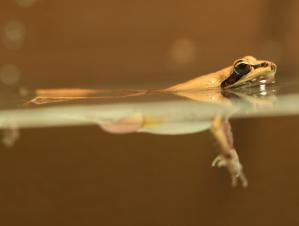This past Spring 2020 brought many new funded projects to Integrative Biology.
Dr. Scott McMurry and Dr. Loren Smith were awarded $380,208 for the first year of a five-year project by the U.S. Army Corps of Engineers. They will evaluate and provide recommendations for management of natural resources and environmental services at Kirtland Air Force Base (KAFB) in Albuquerque, New Mexico. This project includes studies on avian community composition at KAFB and reproductive ecology and habitat use by resident populations of Pinyon Jay, Gray Vireo, and Loggerhead Shrike. Additional efforts include a restoration project of Coyote Springs, a significant cultural resource on KAFB, and studies to assess population numbers and habitat use on KAFB by mountain lions and massasauga rattlesnakes. Findings from these studies will inform and guide the current and future management of the natural resources of KAFB and provide new information on the ecology of several species for which there is limited published research.
 Dr. Jennifer Grindstaff was awarded $433,000 from the National Institutes of Health to improve our ability to predict the individuals that are most vulnerable to adverse developmental conditions. Early life adversity, such as the loss of paternal care, can increase the risk of developing a number of chronic health conditions later in life, at least for some individuals. The differential sensitivity hypothesis proposes that resilient and vulnerable individuals differ in their degree of developmental plasticity, but it is not known how individual differences in plasticity arise. The goal of the research is to test how three factors contribute to differences among individuals in developmental plasticity: (1) prior environmental conditions, (2) physiological reactivity to stress, and (3) hormone receptor concentrations. The studies will be conducted in zebra finches (Taeniopygia guttata), for which there is extensive evidence of programming effects of the early life environment.
Dr. Jennifer Grindstaff was awarded $433,000 from the National Institutes of Health to improve our ability to predict the individuals that are most vulnerable to adverse developmental conditions. Early life adversity, such as the loss of paternal care, can increase the risk of developing a number of chronic health conditions later in life, at least for some individuals. The differential sensitivity hypothesis proposes that resilient and vulnerable individuals differ in their degree of developmental plasticity, but it is not known how individual differences in plasticity arise. The goal of the research is to test how three factors contribute to differences among individuals in developmental plasticity: (1) prior environmental conditions, (2) physiological reactivity to stress, and (3) hormone receptor concentrations. The studies will be conducted in zebra finches (Taeniopygia guttata), for which there is extensive evidence of programming effects of the early life environment.
Dr. Puni Jeyasingh and colleagues at the University of Montana and Arizona State University were awarded $2 million dollars ($500,000 to OSU) to study the general ways in which biological systems gain energy and materials (i.e. grow). The project will use the foundation of ecological stoichiometry to assess if the tripartite connections among growth rate, RNA allocation, and carbon:nitrogen:phosphorus stoichiometry constitute a Rule of Life (the Growth Rate Rule, GRR) and to illuminate the mechanisms by which the GRR might be broken. The research team will test the GRR with intensive physiological, evolutionary, and ecological experiments on various model organisms, including the crustacean Daphnia - the focus at OSU.
 Dr. Daniel Moen was recently awarded a prestigious CAREER grant from the U.S. National Science Foundation of $900,263 to study the evolution of swimming biomechanics in frogs and toads. The five-year project will combine experiments on live frogs, computer modeling, and statistical analyses of the evolution of species differences to understand the evolution of diversity of body form and movement. The key intellectual contribution of the project will be developing an evolutionary approach to studies of form, function, and their diversity across species. A key part of CAREER grants is their focus on integrating research with education and outreach. To this end, the grant will support the development of a new course on the evolution of animal locomotion, with a focus on training undergraduate students in the study of animal movement and research methods through in-class research projects.
Dr. Daniel Moen was recently awarded a prestigious CAREER grant from the U.S. National Science Foundation of $900,263 to study the evolution of swimming biomechanics in frogs and toads. The five-year project will combine experiments on live frogs, computer modeling, and statistical analyses of the evolution of species differences to understand the evolution of diversity of body form and movement. The key intellectual contribution of the project will be developing an evolutionary approach to studies of form, function, and their diversity across species. A key part of CAREER grants is their focus on integrating research with education and outreach. To this end, the grant will support the development of a new course on the evolution of animal locomotion, with a focus on training undergraduate students in the study of animal movement and research methods through in-class research projects.
Drs. Jason Belden, Andy Dzialowski, Puni Jeyasingh, and Noha Youssef (Microbiology) are principal investigators for an $800,000, 10-year grant from the Grand River Dam Authority. This Collaborative agreement between Oklahoma State University and the Grand River Dam Authority Ecosystems & Education Center promotes jointly conducted water quality research. This program funds graduate student research assistants at OSU who will conduct research at the GRDA Ecosystems & Education Center. Our initial research will focus on harmful blue-green algae blooms. We hope to gain a better understanding of the factors that result in a bloom and if water chemistry and microbial measurements may be early warning indicators that a bloom will occur.
